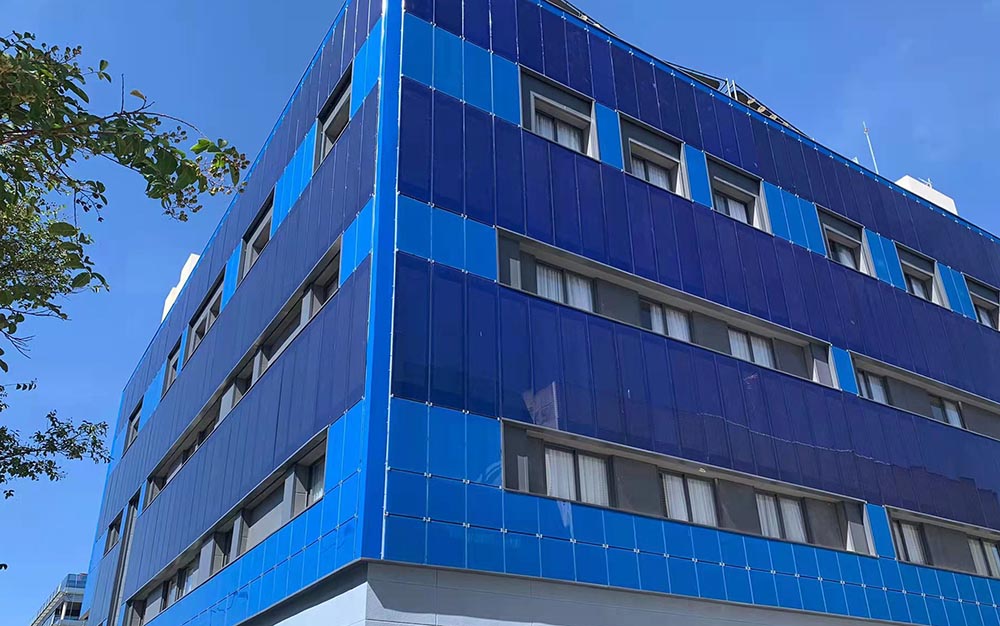 Building Integrated Photovoltaics
Building Integrated Photovoltaics
Apr 27, 2023
Building-integrated photovoltaics (BIPV) serve a dual purpose: they act as the outer layer of the structure, generating electricity for on-site use or export to the grid. BIPV systems can save material and electricity costs, reduce pollution, and increase the architectural appeal of buildings. While they can be added to structures as retrofits, the greatest value of BIPV systems is realized by including them in the initial building design. By replacing standard materials with PV during initial construction, builders can reduce the incremental cost of a PV system and eliminate the cost and design issues for separate mounting system.
Building-integrated photovoltaics systems are planned during the building design phase and added during initial construction. Building-attached photovoltaics (BAPV) were planned and built during the retrofit. Both BIPV and BAPV lack the racking and mounting equipment of conventional photovoltaic systems. Designers of most integrated solar systems consider various solar technologies and their possible uses and compare them to the specific needs of building occupants. For example, translucent thin-film photovoltaics can enable natural lighting, while solar thermal systems can capture thermal energy to generate hot water or provide space heating and cooling.
BIPV application
· Façades – Photovoltaics can be integrated into the sides of buildings, replacing traditional glass windows with translucent thin-film or crystalline solar panels. These surfaces are exposed to less direct sunlight than roof systems, but generally provide a greater usable area. In retrofit applications, photovoltaic panels can also be used to camouflage unsightly or degraded building exteriors.
· Roofing – In these applications, the photovoltaic material replaces the roofing material, or in some cases, the roof itself. Some companies offer integrated monolithic solar roofs made of laminated glass; others offer solar "tiles" that can be installed in place of ordinary roof tiles.
· Glazing - Ultra-thin solar cells can be used to create translucent surfaces that allow sunlight to penetrate while generating electricity. These are often used to create PV skylights or greenhouses.
Architectural Design Considerations
A critical part of maximizing the value of a BIPV system is planning for environmental and structural factors, both of which affect the economics, aesthetics and overall functionality of any solar system.
Envirnmental Factors
· Insolation - This refers to the average amount of solar radiation received, usually in kWh/m2/day. This is the most common way to describe the amount of solar resource in a particular area.
· Climate and Weather Conditions – High ambient temperatures can reduce solar system output, and cloud and rainfall patterns can affect system output and maintenance requirements. High levels of air pollution may require regular cleaning to improve efficiency.
· Shading – Trees, nearby buildings and other structures block sunlight, reducing the output of a photovoltaic system.
· Latitude - The distance from the equator affects the optimal tilt angle at which solar panels receive solar radiation.
Structural Factors
· Building Energy Requirements – The design of a BIPV system should consider whether the building will be able to operate completely independent of the grid, which would require batteries or other on-site energy storage systems.
· Solar System Design – The design of the photovoltaic system itself depends on the energy needs of the building, as well as any structural or aesthetic constraints that may limit material selection. Crystalline silicon panels have higher power output per square meter, but have greater cost and design constraints. Thin-film materials generate less electricity per square meter, but are less expensive and can be more easily integrated onto more surfaces.
Read More

 Building Integrated Photovoltaics
Building Integrated Photovoltaics